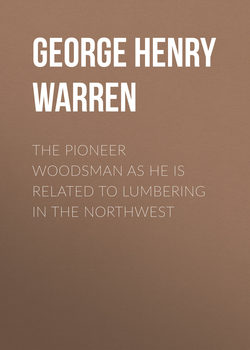Читать книгу The Pioneer Woodsman as He Is Related to Lumbering in the Northwest - George Henry Warren - Страница 3
CHAPTER I.
Sowing the Germ That I Knew Not
Оглавление"This superficial tale is but a preface of her worthy praise."
Early environment sometimes paints colors on the canvas of one's later life.
Fifty years ago in western New York, there were thousands of acres of valuable timber. The country was well watered, and, on some of the streams, mills and factories had sprung into existence. On one of these were three sawmills of one upright saw each, and all did custom sawing.
My father was a manufacturer, especially of carriages, wagons, and sleighs. There were no factories then engaged in making spokes, felloes, whiffletrees, bent carriage poles, thills or shafts, and bent runners for cutters and sleighs. These all had to be made at the shop where the cutter, wagon, or carriage was being built. Consequently the manufacturer was obliged to provide himself with seasoned planks and boards of the various kinds of wood that entered into the construction of each vehicle. Trips were made to the woods to examine trees of birch, maple, oak, ash, beech, hickory, rock elm, butternut, basswood, whitewood, and sometimes hemlock and pine. The timber desired having been selected, the trees were converted into logs which in turn were taken to the custom mill and sawed into such dimensions required, as far as was possible at that period to have done at these rather primitive sawmills. Beyond this the resawing was done at the shop.
Thus, almost unconsciously, at an early age, by reason of the assistance rendered to my father in selecting and securing this manufactured lumber from the tree in the forest to the sawed product of the mill, I became familiar with the names and the textures of many kinds of woods, the knowledge of which stood me in good turn in later years.
